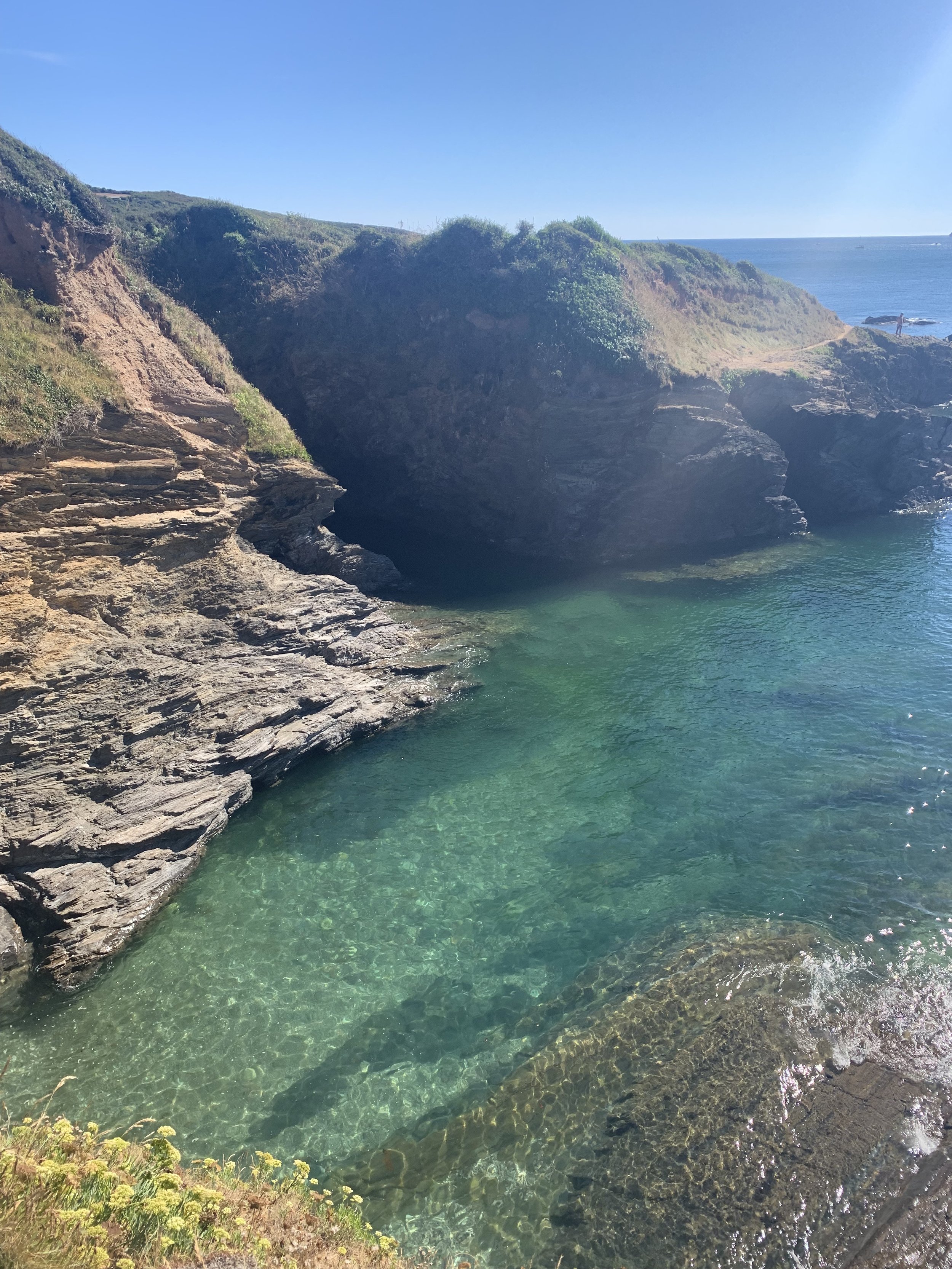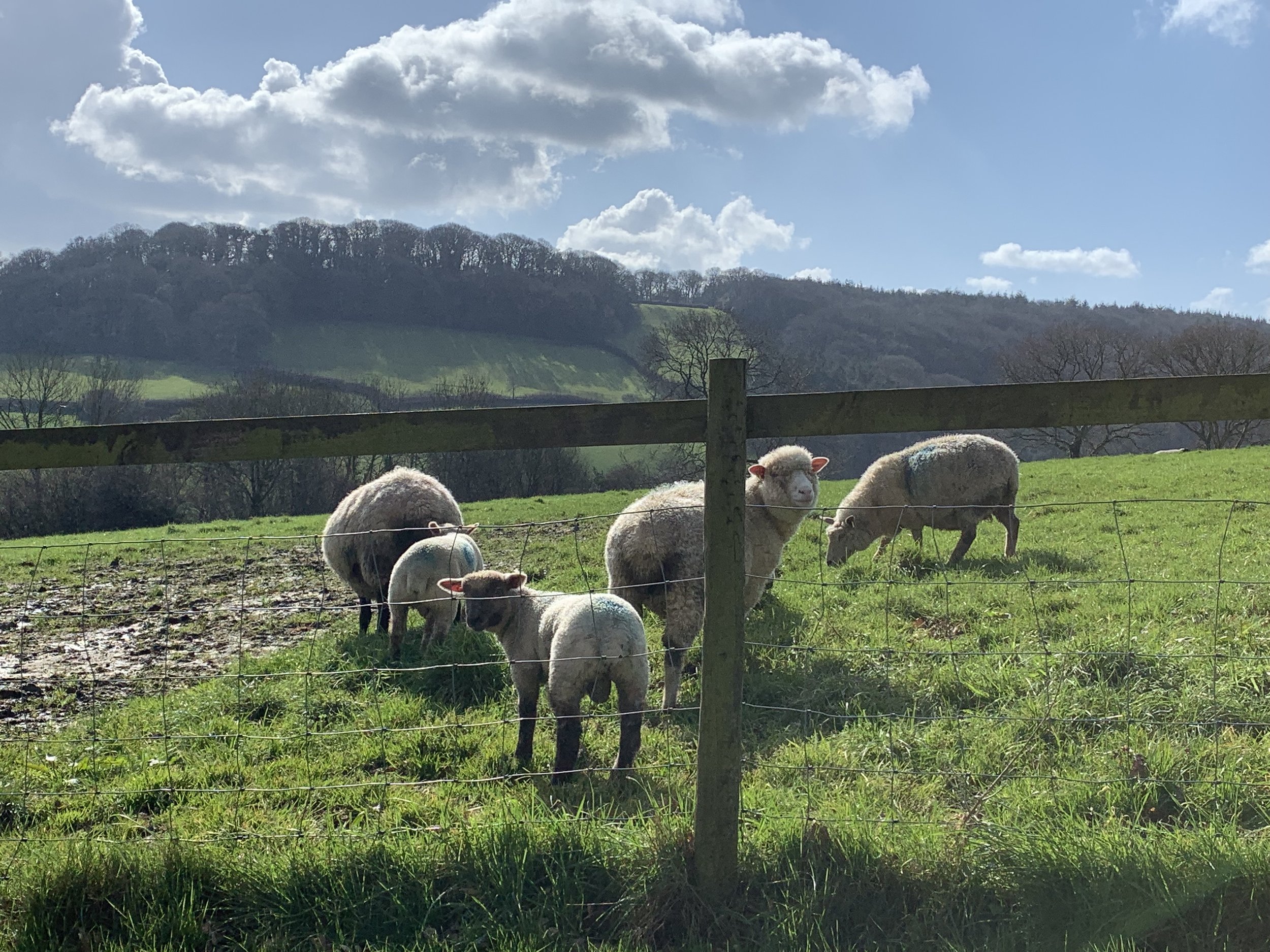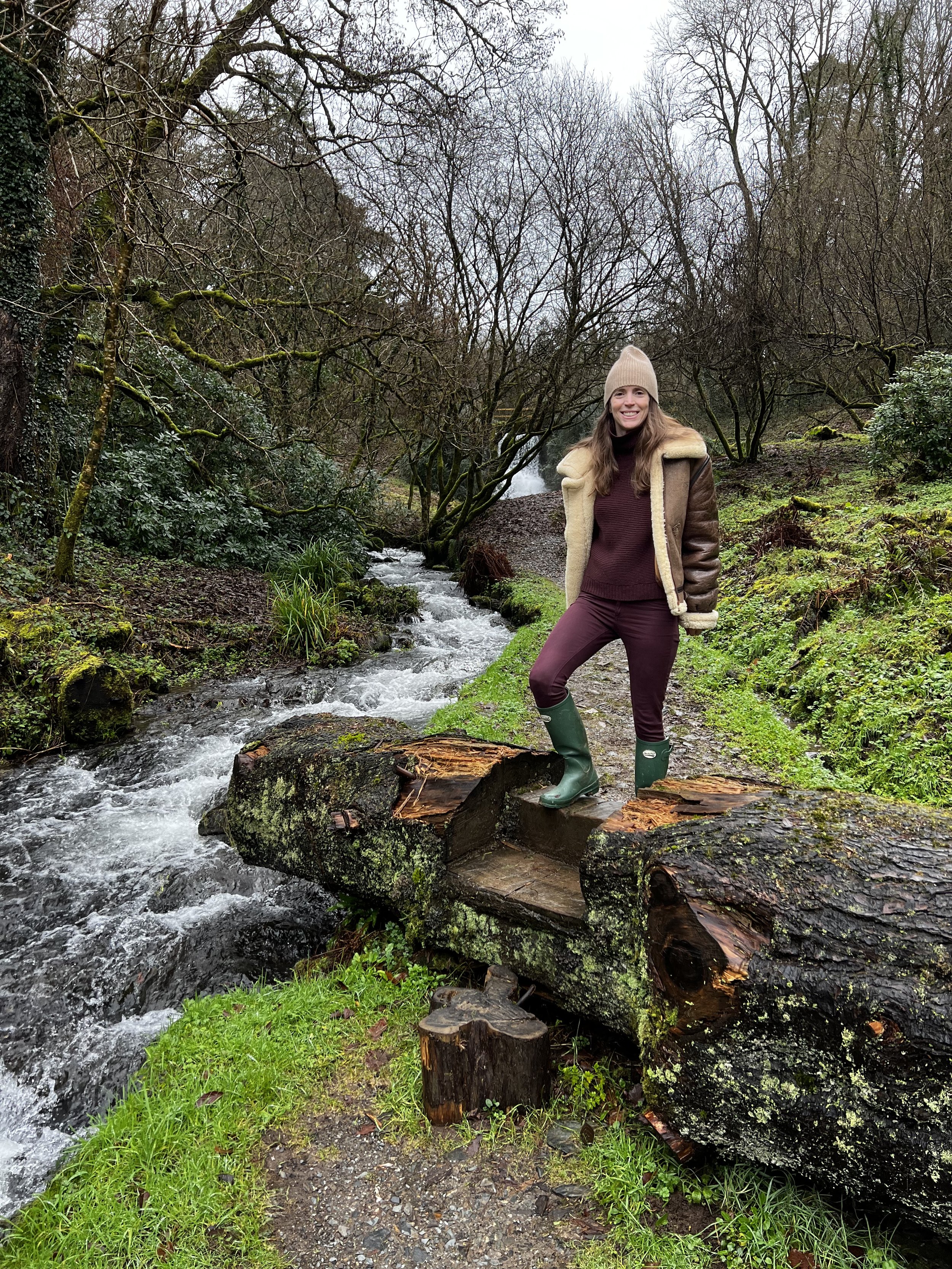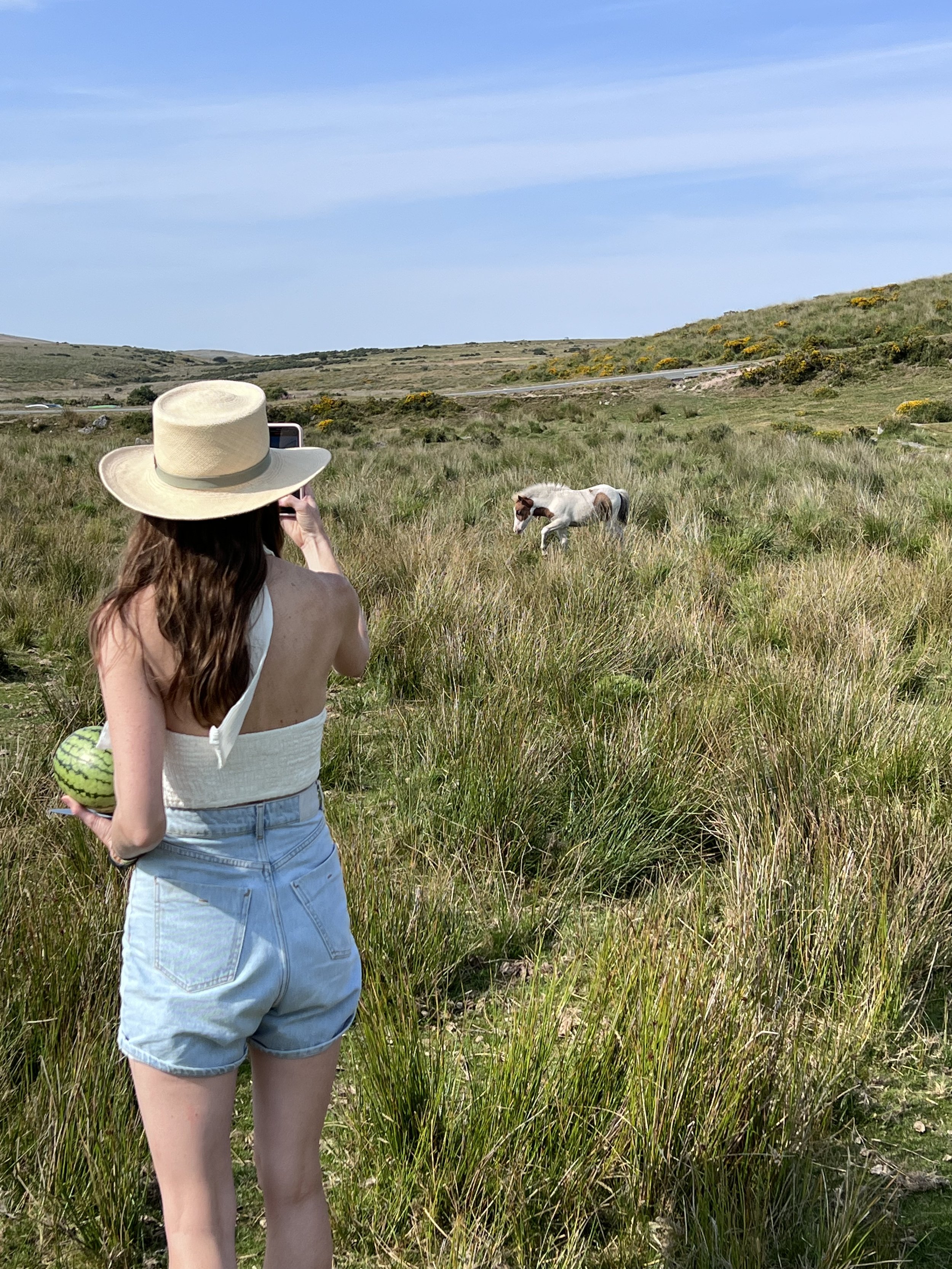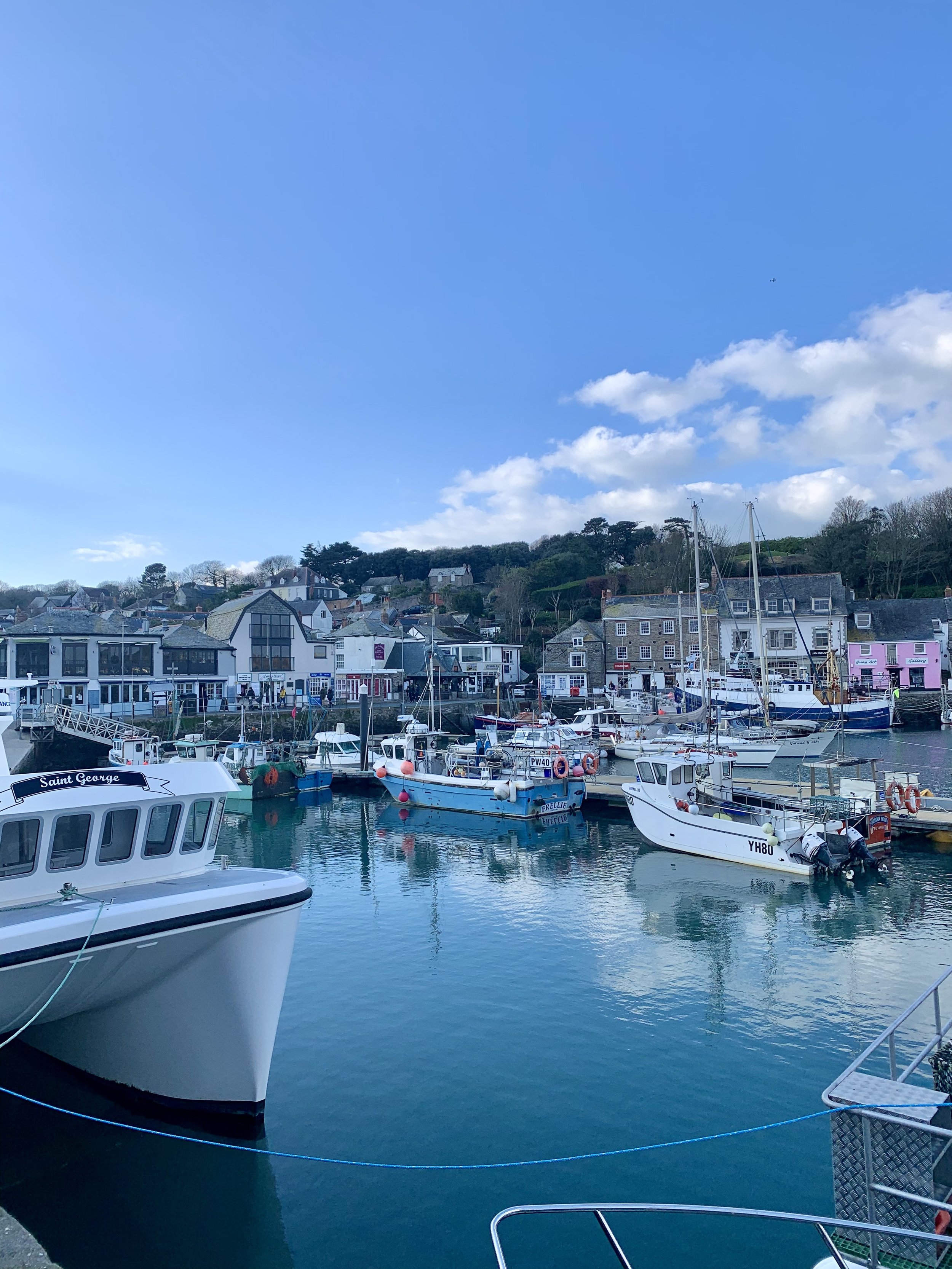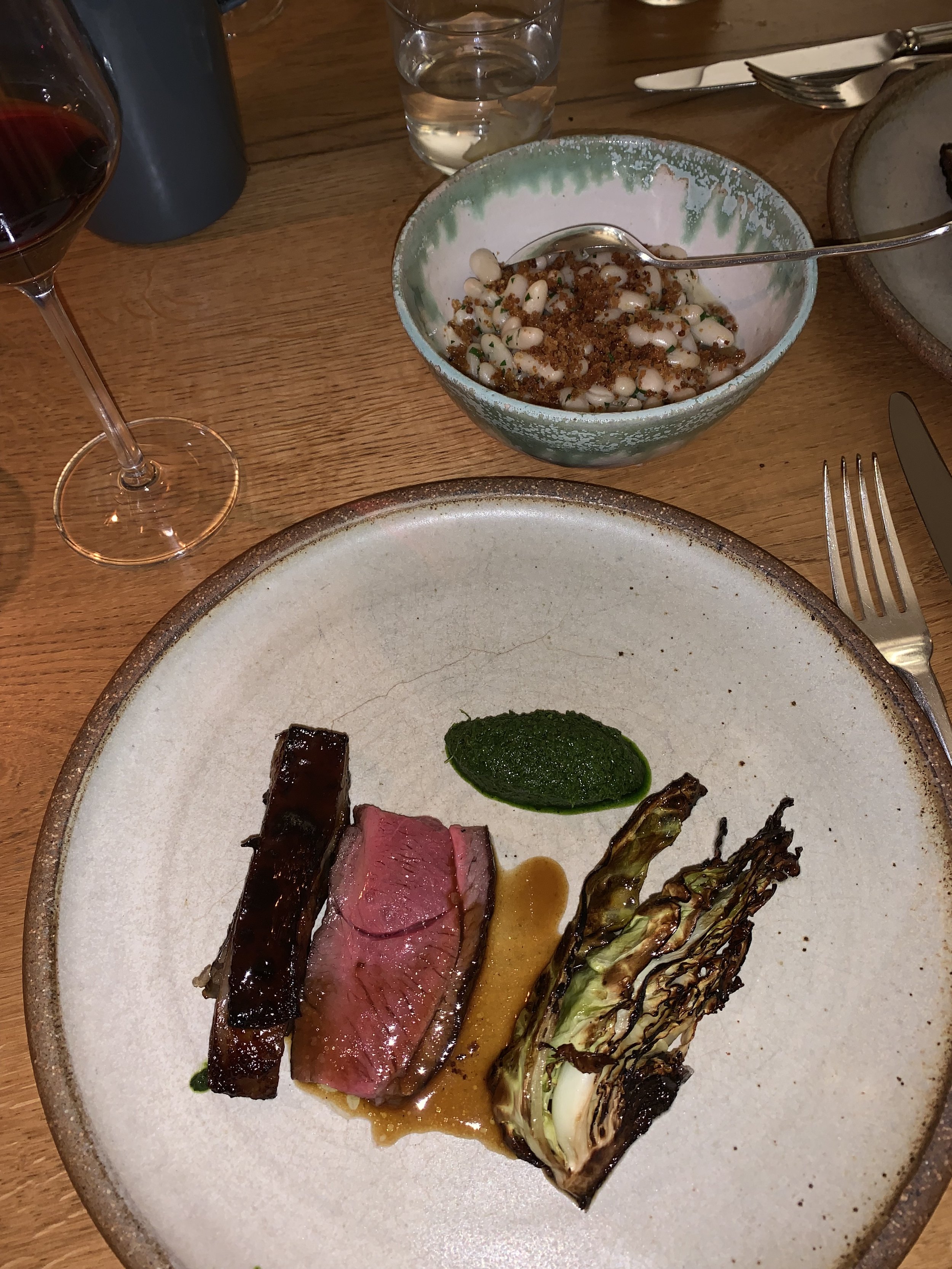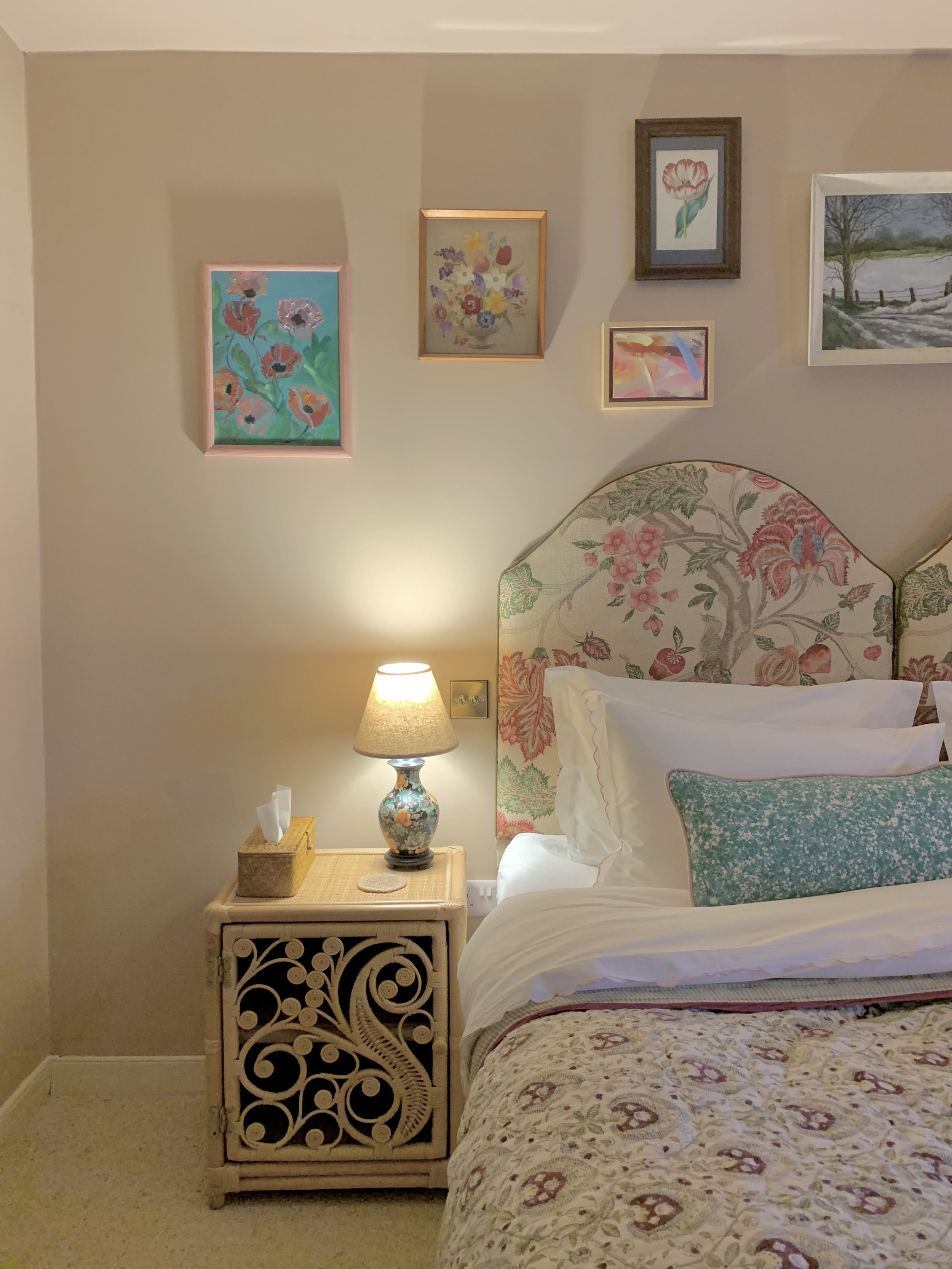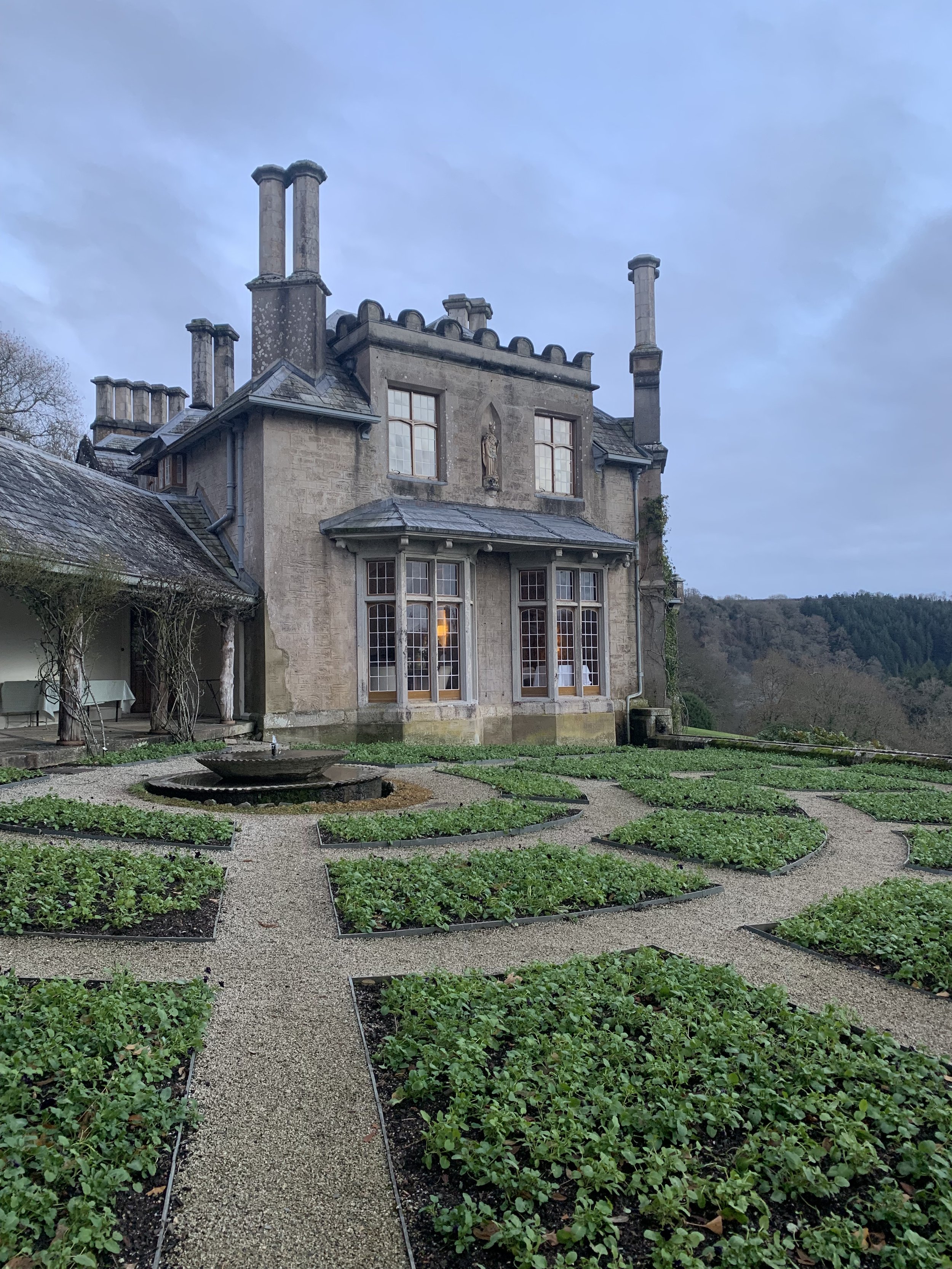Travel Guide: Devon & Cornwall
This part of England is not to be overlooked — find out why.
I may be biased, but I think Devon and Cornwall in Southwest England are two of the most beautiful places in the world. I have come to experience them through my husband who’s from Devon, on the border of Cornwall, and whose family still lives there. We have visited during pretty much every season, and no matter the weather, I am blown away every time. I might not have ever come here on my own, and that’s why I am always so excited to recommend it to people — in or outside of England. It’s an area not to be missed, well worth putting on your travel bucket list.
Every time I visit I try to make new discoveries so while this guide isn’t comprehensive, it covers a pretty wide area. But most importantly, I’m only including recommendations for places that I’ve truly enjoyed and think are worth your time, energy and pocket book.
What Makes It So Special
Natural beauty. This is true English countryside, so much of it is still untouched or left as farmland (yes, there are lots of sheep). Imagine landscapes from a Jane Austin novel (and in fact some film adaptations have been filmed there). But what differentiates it from other popular country areas, like the Cotswolds, is that Devon and Plymouth both have the sea. Where the countryside and ocean collide makes for some of the most breathtaking views. Unlike so many seaside areas, the coastline is fairly unspoiled, largely a result of the remoteness and ruggedness.
Thriving food scene. Like many I had always dismissed British food from a culinary perspective. Luckily for me, I was very wrong. In fact, this part of England is turning into quite a culinary destination. Due to the location, it’s a seafood lovers paradise and farm to table is within a few miles. Many top chefs, from London and elsewhere, have relocated to the region for a better quality of life and for the fruits of the land and sea. Many agriturismos, which are essentially farms designed to receive guests for food and accommodation, have popped up along the countryside and are rivaling the long-established foodie regions of Basque region of Spain and Emilia-Romagna in Italy. These restaurants-with-rooms are making inventive food using the best local ingredients and welcoming guests with quintessential English style.
Authenticity. So much is said these days about authenticity, it starts to lose its meaning. So here’s what it means to me. When I travel to the country, I don’t want to feel like I’m in the city. We don’t need everything to be like what we are used to. It’s good to leave our creature comforts of the city, the gourmet shops and extreme convenience, and embrace the rhythms and customs of a different place altogether. And that’s what you get here. There’s a real soul to the Southwest. Maybe it’s because the people here are so accustomed to nature being at their backdoor – they take the time to enjoy it and live at a slower pace. And so you will too.
Cliffs overlooking crystal clear waters in Plymouth, Devon.
Overlooking the harbor in Fowey, Cornwall
Random Facts
WWII History. When I first spent time in southwest England, I was surprised how prominent WWII landmarks are. Many of the seaside towns were used as staging grounds for sending troops to France for key battles. The central part of Plymouth (where my husband is from) was bombed out during the war and has subsequently been rebuilt at a loss of those historical buildings. Perhaps more so than in big cities, you can really pause and remember these important moments in history when you come across local memorials.
Duke of Cornwall. As an American, I was vaguely aware of the Prince of Wales inheriting the Duchy of Cornwall, but it never really dawned on me what that meant. I’ve since come to understand that the Duke of Cornwall / Prince of Wales owns vast amounts of land across Cornwall and parts of Devon, making him one of the biggest landowners in Britain, and he generates income by collecting residential and commercial rents.
Devonshire. You may come across ‘Devonshire’, as that’s what the area used to be called. In the 1970’s, the local government rebranded it to Devon for unknown reasons (that I’ve been able to find anyway).
Devon dairy. As a rural area, Devon has a rich history of dairy farming. Devon’s dairy production is 39% of England’s dairy output. Its most famous dairy export is classic Devonshire cream or clotted cream (yes, they still refer to the cream as ‘Devonshire’).
The cream tea debate. Cream tea is commonly served at little cafes and includes tea and a scone with clotted cream and jam on the side. There’s a raging debate about what order to put the cream and jam on the scone. In Cornwall they say jam must go first, then the cream. In Devon it’s cream first, then jam. So, you be the judge!
Cornish pasty. Cornwall is known for the pasty (pronounced pas-t). A tender pastry typically filled with meat and veg is a classic grab-and-go food that’s cheap and tasty. They are so specific to Cornwall that by law you cannot sell a ‘Cornish pasty’ unless it was made in Cornwall.
Getting There
Plane. There are now direct flights to Exeter in Devon, via Dublin. But it’s still probably easiest (and cheapest) to fly into Heathrow.
Train. If you are going to a specific destination and won’t need to get around much, I’d recommend training for convenience and for the view. The train line goes from London all the way to Penzance in the furthest most tip of Cornwall with many stops along the way.
Car. For sightseeing and stopping in more remote areas, a car is the most ideal mode of transportation. Devon is about 3-4 hours from London depending on where you’re going. Cornwall is anywhere from 1-2.5 hours from Devon, again location dependent.
Bovisand Beach in Plymouth, Devon
The view from Jennycliff, Plymouth
Planning Your Trip
Brake for AONB. Huge parts of Devon and Cornwall have been designated as Areas of Outstanding Natural Beauty (AONB), meaning they’re protected for conservation due to their significant landscape value. Look out for these areas on your map and spend some time there. You won’t be disappointed.
Drive with extreme caution. Driving in the countryside is not for the faint of heart. Many roads are one way, with huge hedgerows or stone walls on either side. My best advice is to look out for shoulders along the road where you can pull over – why you ask? Well, if you encounter another car, you may have to reverse to the nearest opening.
Don’t underestimate the distances. The motorway only goes to Exeter; from there the roads just get smaller and smaller the further out you go. Maps can be deceptive — locations look pretty close, but they’re actually further than you’d think. So put destinations into Google maps and check the distances while you’re planning.
Plan for rain, enjoy its benefits. While you might have a pretty good idea of how rainy England is, keep in mind that Devon is even wetter due to its oceanic climate. On the plus side, the high precipitation produces some of the greenest greens you’ll ever see and results in moderate temps in all seasons.
Endless fields of heather in Dartmoor in summertime
What To Do: Devon
Visit Dartmoor National Park
Dartmoor is a classic English moorland (think Wuthering Heights thought that was in Yorkshire). The area, which spans 386 square miles, is best known for its craggy landscape punctuated by tors (rock formations) where sheep, cattle and wild ponies roam free. Yes, you read that correctly, there are wild ponies. They’re pretty easy to spot galloping around in packs, and in grazing areas (like beside rivers) they’ll come right up to you. I’ll admit, I had the miraculous experience of petting a pony, but I’ve been advised not to do so and will pass that along. They’re wild animals, after all, and it’s not good for them to be fed by humans and attracted to roads / cars where they can get hurt.
An ideal day would be spent packing a picnic in a hamper then setting out to the park (it is a good distance to get in and out). Choose one of the many trails to hike, then find a stream or any other peaceful spot to eat lunch. In cooler temps or rainy days, it’s still worth it to drive through the park to take in the landscapes and moody atmosphere. Stop at The Royal Oak pub in Meavy for a pint and a step back in time.
A tor in Dartmoor
One of the famous Dartmoor wild ponies
Saltram House (National Trust)
In England visiting National Trust Houses is always a well-worth-it activity. The organization preserves England’s most historic homes for future generations to enjoy. Plymouth is home to Saltram House, a late 18th century Palladian manor house which is as opulent and grand as you’d imagine. Scenes from Ang Lee’s Pride & Prejudice with Emma Thompson and Hugh Grant were shot here. Leave time to explore the property and enjoy a peaceful walk in the trails that surround it. Don’t miss the Orangerie and the stable which has been turned into a cafe (food is pretty good at National Trust houses) and a gift shop (they always stock wonderful local goods including jams, sweets, pottery, and other craftmade items).
Day trip to the Jurassic Coast
If you find yourself on the eastern side of Devon (though still doable from anywhere in Devon), I highly recommend heading over to the Jurassic coastline, an AONB as well as a UNESCO World Heritage Site (putting it in the same category as the Great Barrier Reef and the Grand Canyon). The 95 mile stretch of coastline spans 185 million years of the Earth’s history. I suggest visiting Lyme Regis which is just over from Devon. There’s a typical beachside town that opens up onto a massive swath of beach, and if you walk to the far end, you can see some of the cliffs and find fossils below your feet. This is an ideal spot to get fish & chips (there are stands on the beach) and eat with your toes in the sand. If you’re staying in a place with a kitchen, pick up fish or shellfish from the local fish store just up from the harbor.
A cliff on the Jurassic Coast revealing 185 million years of history
Fish & chip on the beach in Lyme Regis
Seaside Villages
There are lots of villages tucked along the coast. I’ll be honest they’re not much for shopping if that’s your thing, but they hold their own little charm. I like to find a good restaurant — be it a classic pub or something a little more food-y — and plan a day around it. Maybe I’ll come before lunch and stroll around the town. Then I’ll work off the lunch with a walk on a nearby trail or beach. To finish off the afternoon, there are a couple of options, both very English — you could pop into a caf for a cup of tea or stop by a pub for a pint. You can’t go wrong either way.
Fishing boats ashore in Beer, Devon
Winery Visit
Little known fact is that Southern England is the home of many wineries. While the majority is in Dorset, Sharpham Winery can be found on the banks of the River Dart in Devon – set on a 450 acre estate. You can visit for tours and tastings and dine at its restaurant. Made with 100% estate grown red grapes, its rose is the taste of summer. Did I mention they make their own cheese? Only open in the warmer months (after March 1st), I can’t imagine a more lovely way to spend a day than to enjoy the countryside while sampling the local bounty.
The beach at Treyarnon Bay, Cornwall
What To Do: Cornwall
Hit the Beach
Cornwall is known for its beaches and waves, so it’s no surprise it’s the UK’s biggest surf spot. Even if you don’t surf, the beaches have so much to offer. The vibes are akin to the West coast, like Big Sur, and the beaches rival you’ll find in the Mediterranean. Just to warn you, the water is cold, even in the summer. Those who flock there for summer consider it refreshing. You can decide for yourself. Off season, the beach is still a draw. There are lots of great trails and cliff walks that snake around the coastline providing some epic views. Our favorite spot is Treyarnon Bay (where you can catch a phenomenal sunset) and Constantine Beach right around the corner (which my husband calls a “posh beach”), but there are countless others from Pedn Vounder Beach at the furthest most tip to Porthmeor Beach in the northern part of the peninsula.
Cliffs at Treyarnon Bay, Cornwall
Some of the famous waves in Cornwall
Padstow
Padstow is a classic holiday village, built up next to a harbour, with pedestrian streets lined with candy stores, shops selling tourist trinkets, and lots of restaurants, some of them very upscale. Pick up some locally made St Eval candles (perfect gift to bring home). Seafood is a must, with fresh fish caught nearby. The town is a reflection of Cornwall these days — you’ll find local kids skating in the park on your way to a Michelin starred restaurant. Some hate to see how the English TV chef Rick Stein has built up a mini empire in this area (and attracted fellow big name chefs), but at the same time, tourism brings money into this very remote, lower income area.
The harbor in Padstow, Cornwall
Fresh catch in Padstow
The Eden Project
For a break from the beach (or on a rainy day), I recommend The Eden Project — home to the largest indoor rainforest in the world! The sprawling complex was built into a crater the size of 30 football pitches, which was formerly a china clay pit (china clay used to be a huge export from Cornwall). It’s made up of two geodesic domes which host biomes, one the tropical rainforest and the other a Mediterranean environment. It’s pretty cool and educational too.
Food with a view at The Canteen at Maker Heights
Where to Eat: Devon
Riverford Field Kitchen (Buckfastleigh) This is my husband’s family’s favorite dining out spots because you get fresh delicious food, in healthy portions, for a good price. It’s an organic restaurant, made with locally farmed food, with a constantly rotating menu based on what’s in season and served family style.
The Oyster Shack (Bigbury) A laid back summer seafood spot. The oysters are ENORMOUS if that’s your thing. I recommend the crab for a hands-on dining experience, but you won’t be disappointed with the catch of the day. For dessert the ice cream is surprisingly good. Warning: one road to get to this restaurant literally gets flooded over by high tide. So look up the tide schedules to determine if you can pass or need to take the alternative route.
The Seahorse Restaurant (Dartmouth) An elegant seafood restaurant serving charcoal-roasted shellfish and fish. Try the roasted scallops, a local delicacy, beautifully served on the halfshell (don’t be put off by the roe, called coral, that’s commonly left on).
The Elephant Restaurant (Torquay) Low key fine dining with inventive dishes made with local ingredients. You can enjoy a reasonably priced set lunch or a more indulgent tasting menu for dinner.
Mutton at Glebe House Devon
Grilled lobster at Fitzroy
Where to Eat: Cornwall
The Canteen at Maker Heights (Millbrook) A hidden gem perched at the top of a lookout point — we actually walked there from Mount Edgecumb along a trail, but you can get there by car. It’s pretty understated, but the simple, delicious food and the panoramic views make it a pretty special spot for lunch (a good stop off point while driving from Devon to Cornwall).
Fitzroy (Fowey) This chef-driven restaurant works wonders with seasonal ingredients. On their Instagram, they’ll share what ingredient they just got in and will be featured in dishes. I had one of the best lobsters of my life there, smothered in garlic butter and grilled. Oh my! I really enjoyed sitting at the bar which opens right onto the kitchen and watching the pros at work. The owners have another spot, North Street Kitchen, down the street that’s open for lunch only.
Prawn on the Lawn (Padstow) You know the seafood is fresh when they display it in the window. The fish and shellfish is served up in an unfussy way (in contrast to some of the higher end spots in the area). I ordered a fish and shellfish stew to taste a little of everything. I’d also highly recommend the fresh bread with seaweed butter. So good!
The Hidden Hut (Truro) Show me a beach hut that serves better quality food. I’ll wait…
Vine by Knighter (Portscatho) A pop up eatery by the only winery in the Roseland, the emphasis is food with big flavors and wine, served in a chill atmosphere. Their specialty is vermouth including this highly unique rose vermouth, best served over ice with a bit of soda or made into a Cornish Negroni.
The breathtaking view from breakfast at Glebe House
Where to Stay
Glebe House Devon (East Devon)
One of my favorite places I’ve ever stayed, Glebe House will always hold a special place in my heart because it’s where we celebrated our engagement (we got engaged on the walk from Beer to Branscombe). Its chef-owner grew up in the house, and he eventually took it over with his wife and turned it into an agroturismo after a major renovation. A huge stand out is the decor which nods to English country but with a quirky, modern update. Each room is decorated uniquely, and many of them have wonderful soaking tubs. There are so many loving details, from the gooey chocolate cookie upon check-in to a book suggesting walks nearby with lovely illustrated maps. Dinner is not included but I highly recommend planning on it – the multi-course menu is based on whatever is in season and is served like a dinner party, starting with canapes in the drawing room and moving into the dining room for supper.
Hope Cove House (South Devon)
Founded by a former London chef, this guest house features a restaurant serving up simple food made with local ingredients. Located in the southernmost part of Devon, it's a lovely location for a meal and a relaxing stay. I love that it’s decorated like a home, with cozy interiors nodding to the surf and the sea. This is what you want from a lowkey beach stay.
Soaking tub in a lovely bathroom, Glebe House
Uniquely furnished bedroom, Glebe House
Hotel Endsleigh (West Devon)
For something on a grander scale, I recommend Hotel Endsleigh. Built by the Duke of Bedford as a hunting lodge, the manor, designed in the cottage orné style, is set on a breathtaking landscape chosen for its unparalleled beauty and its location beside the Tamar River. The rooms have all been updated but retain all of the historical detail, so you feel as though you are staying in a traditional country estate in a bygone era. The wonders of the property draw you to explore – they even provide wellies and slickers to suit up properly. You’ll find a rockery, a shell grotto, several waterfalls, an arboretum, and formal gardens including a rose pergola and the longest herbaceous border in England. A slice of heaven.
The facade of Hotel Endsleigh overlooking the children’s partere
A chaise with a view at Hotel Endsleigh
Coombeshead Farm (East Cornwall)
In the heart of Cornwall’s rural countryside (just across from Devon), this guest house and working farm set on 66 acres offers a wondrous escape. The rooms are simple and cozy, but the star is the restuarant. In true agroturismo fashion, the food served in the restaurant is grown on the land but is turned into a next level dining experience by its two acclaimed chefs, Tom Adams and April Bloomfield of Spotting Pig fame in New York City.
Hotel Tresanton (Far West Cornwall)
Owned by the same proprietor as Hotel Endsleigh (she describes the properties as her children whom she can’t pick a favorite), the property is built into a cliff with views overlooking St Mawes Bay. The vibe is understated luxury done in a very homey way with a mix of old and new furniture. It's home to an upscale restaurant and a beach club with a decidedly Mediterranean feel.
Vacation Rentals
There’s Airbnb and VRBO in the UK, but for something a little more special I suggest checking out Plum Guides or Unique Home Stays which both offer curated home stays all across England. Having a house as a home base can be a great option especially if you opt for a longer stay – which is the perfect way to get the feel for this beautiful region.
A homemade breakfast served at Glebe House


